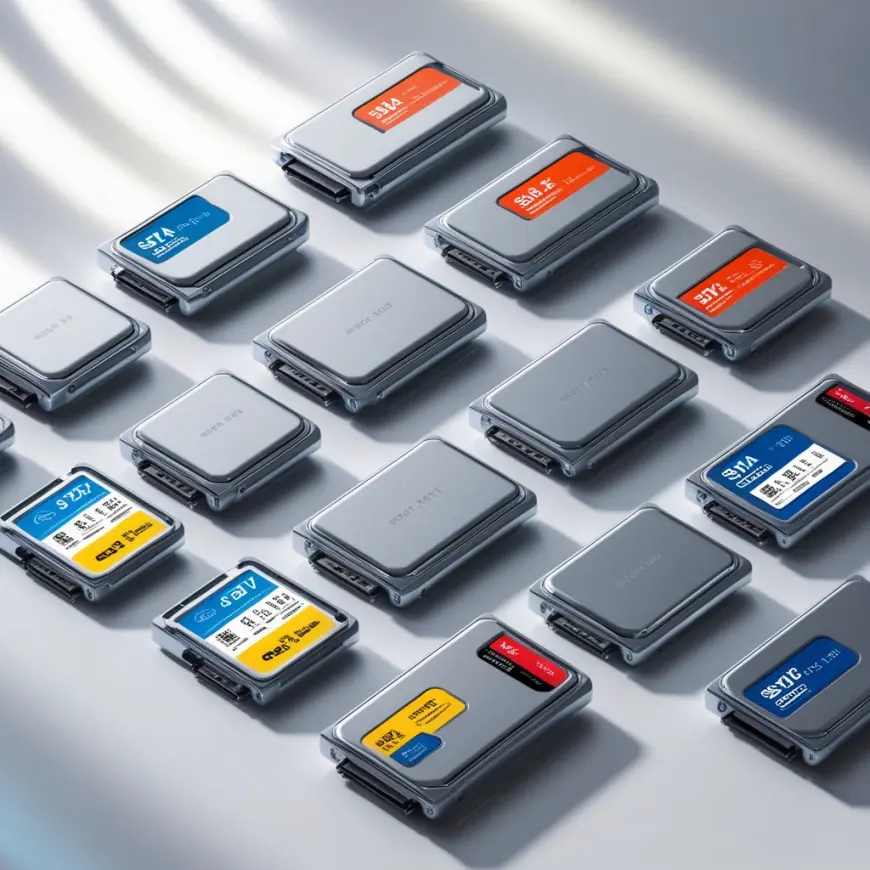Advancing the world of Solid-State Drives- A revolutionary step towards novelty in technology
SSDs provide faster data access, increased reliability, energy efficiency, and silent operation because they do not have any moving parts.

In contemporary computing, solid-state drives (SSDs) have supplanted hard disk drives (HDDs) as the recommended storage option. SSDs provide faster data access, increased reliability, energy efficiency, and silent operation because they do not have any moving parts.
This article will cover solid-state drive varieties, technologies, advantages, and how to pick the best SSD for your requirements. Ultimately, you can choose wisely when adding SSDs to your computer configuration.
What is an SSD?
Solid-state drives, or SSDs, are storage devices that use integrated circuit assemblies as memory to store data. Unlike conventional Hard Disk Drives (HDDs), which read and write data using rotating disks and mechanical arms, SSDs do not have any moving parts. Therefore, they are the ideal storage type for your web server, enabling you to access data more quickly and consistently than HDDs.
Fundamental Elements and Organization
SSDs are made up of various essential parts:
How Do SSDs Function?
Solid-state drives (SSDs) are currently the go-to storage choice for various computing devices, from laptops to dedicated servers. Their appeal is primarily due to their remarkable speed, dependability, and efficiency, all made possible by their unique architecture and data storage systems. To better understand how SSDs work, closely examine their core components and working processes.
NAND-equipped flash memory
The core of every SSD is a NAND flash memory chip. These chips consist of many memory cells arranged in a grid pattern. The semiconductor material in each cell stores a certain amount of data by trapping electrical charges. The existence or lack of these fees enables the storage of digital data, which represents
How Do SSDs Operate?
Solid-state drives (SSDs) are now the preferred storage option for various computer devices, from laptops to dedicated servers. Their exceptional speed, dependability, and efficiency—all made possible by their distinctive architecture and data storage mechanisms—are the main reasons for their popularity. Let us examine SSDs' internal parts and operational procedures to comprehend how they function.
Flash Memory with NAND
NAND flash memory chips are the central component of all SSDs. These chips are made up of several memory cells grouped like a grid. Each cell's semiconductor substance traps electrical charges, allowing it to store a specific quantity of data. The presence or absence of these charges, representing binary data (0s and 1s), makes digital information storage possible.
NAND flash memory is classified into different types based on its structure and operation, such as Single-Level Cell (SLC), Multi-Level Cell (MLC), Triple-Level Cell (TLC), and Quad-Level Cell (QLC). These classifications determine factors like storage density, performance, and cost, with SLC offering the highest but lowest storage density and QLC providing the highest density but lower performance.
Controller
The controller is the central processing unit of an SSD, responsible for managing data storage and retrieval. It communicates with the host device (e.g., computer, server) and orchestrates the data flow between the host and the NAND flash memory chips.
The SSD controller's primary duties include:
Encoding and decoding data: The controller transforms host-received data into a format that the NAND flash memory can store and vice versa.
Wear-Leveling: A finite number of program/erase cycles indicates the restricted lifespan of NAND flash memory cells. The controller evenly distributes write operations throughout the memory cells to prevent early wear-out of individual cells, guaranteeing uniform usage and extending the Solid-State Drive's lifespan.
Error Correction: To improve data integrity and dependability, SSDs use error correction algorithms to identify and fix data problems that might arise during transmission or storage.
Garbage Collection: Unused memory blocks on an SSD gather traces of previous data as it is written, erased, and altered. The controller collects trash, locating and combining these unneeded blocks to make room for new data and preserve peak performance.
Artificial Intelligence's (AI) Effect on SSD Technology: AI is a significant factor in improving the performance of solid-state drive devices. AI-powered storage systems use machine learning techniques to examine workload trends and adjust real-time performance. Predictive analytics improves overall efficiency and reduces latency difficulties by precisely anticipating application requirements in advance.
Origins and Development of QLC Technology: Quad-level cell (QLC) technology is a fascinating advancement in solid-state drives that contributes to higher capacity at affordable costs. Without sacrificing speed or endurance features, QLC-based SSDs can deliver greater capacities required by contemporary applications while maintaining competitive costs by storing four bits per memory cell rather than three.
Reliable TLC-enabled enterprise-grade storage solutions:
Compared to their MLC equivalents, triple-level cell (TLC) technology offers remarkable cost-efficiency gains that allow businesses to take advantage of enterprise-grade SSD capabilities at a reduced cost. TLC-based SSDs are more suited for server-centric applications and meet the needs of data-driven firms at a significantly lower cost than alternative options.
Data Integrity Protection with SSD Backup Solutions:
Both consumers and companies place a high premium on data integrity. Because solid-state drives don't have any mechanical components, they are much more reliable and have a lower failure rate than typical HDD backup systems. Therefore, using strong data redundancy techniques reduces the chance of loss or corruption and protects essential data.
In conclusion
It is becoming increasingly clear that Buy Solid State Drives Online will continue to influence our digital environment for years as new technologies advance them. SSDs are now the most popular storage solutions for various applications because of continuous capacity improvements, performance improvements via protocols like NVMe, AI-powered optimizations, QLC technology deployments, and dependable TLC choices.
What's Your Reaction?
 Like
0
Like
0
 Dislike
0
Dislike
0
 Love
0
Love
0
 Funny
0
Funny
0
 Angry
0
Angry
0
 Sad
0
Sad
0
 Wow
0
Wow
0






















































